Table of Contents
Ready to ditch the crowded gym and embrace the convenience of working out at home? Investing in a home gym equipment treadmill can revolutionize your fitness routine, allowing you to run, jog, or walk your way to a healthier you, regardless of the weather outside. But with so many options flooding the market in 2025, finding the perfect treadmill for your needs and budget can feel overwhelming. That's where we come in.
Best Treadmill for Home Gyms of 2025
Best Treadmill for Home Gyms of 2025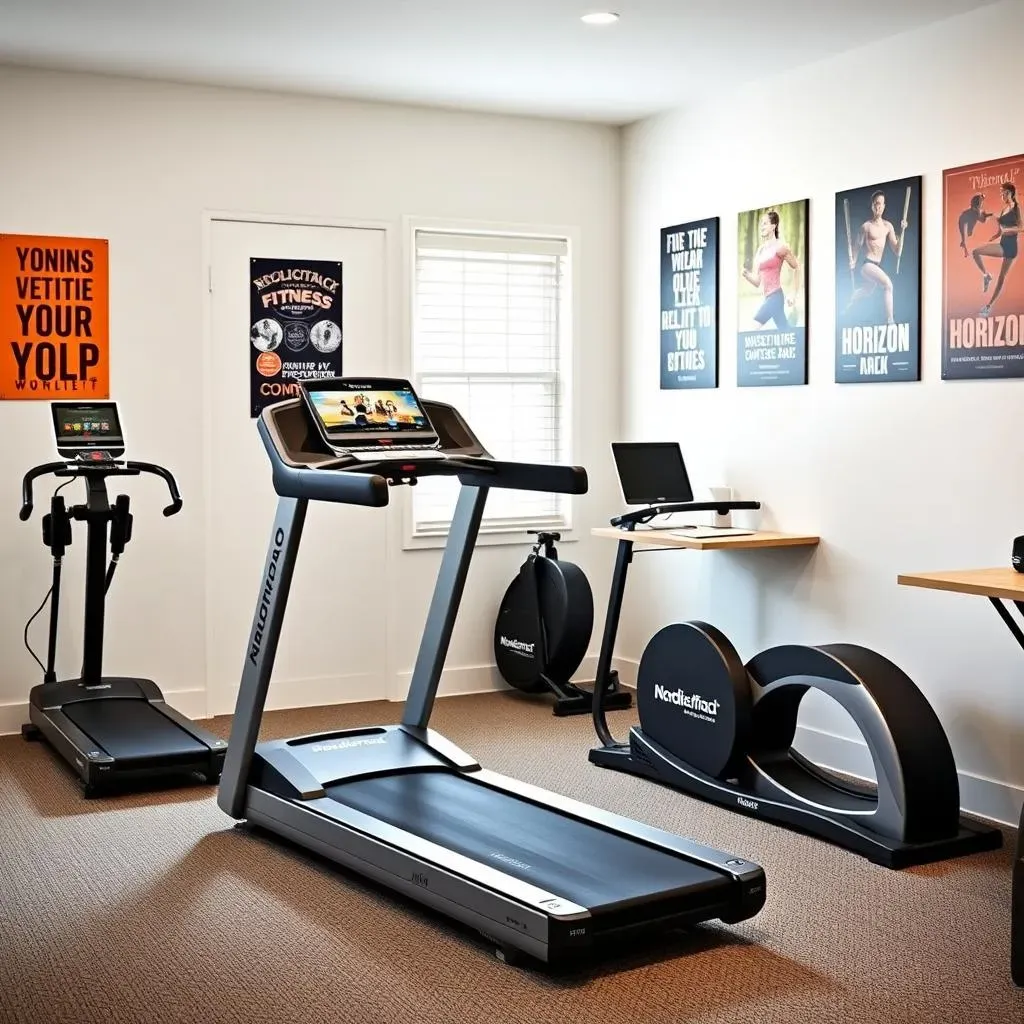
NordicTrack Commercial 1750: The All-Around Champ
If you're searching for a treadmill that can handle everything from brisk walks to intense interval training, the NordicTrack Commercial 1750 is a top contender. This model consistently earns high praise for its robust build, guided programming, and user-friendly features. With a 3.5 CHP motor, it provides ample power for most runners, and the spacious 60" L x 22" W deck ensures a comfortable stride. What sets it apart is the immersive training experience offered through iFit, NordicTrack's interactive fitness platform. You can access a vast library of on-demand workouts led by expert trainers, transforming your home gym into a dynamic studio.
Horizon Fitness 7.0 AT: Budget-Friendly Beast
Don't want to break the bank but still crave a quality treadmill? The Horizon Fitness 7.0 AT is a fantastic option that delivers impressive performance at an affordable price. It boasts a sturdy frame, a 60" L x 22" W deck, and a 3.0 CHP motor, making it suitable for runners and walkers alike. The 0-15% incline range adds versatility to your workouts, allowing you to simulate challenging hill climbs. While it may lack the bells and whistles of higher-end models, the Horizon 7.0 AT focuses on the essentials, providing a reliable and effective workout experience without the premium price tag.
- Spacious running deck
- Powerful motor for the price
- Good incline range
- Bluetooth connectivity for fitness tracking
WalkingPad C2: The Space-Saving Solution
Limited on space? The WalkingPad C2 is a game-changer. This under-desk treadmill is designed for walking, making it perfect for those who want to stay active while working from home or simply add more steps to their day. Its compact size and foldable design allow for easy storage under a bed or in a closet. While the 1 HP motor is geared towards walking, the WalkingPad C2 provides a convenient and discreet way to incorporate low-impact exercise into your daily routine. Say goodbye to sedentary workdays and hello to a healthier, more active lifestyle.
Feature | NordicTrack 1750 | Horizon 7.0 AT | WalkingPad C2 |
|---|---|---|---|
Motor | 3.5 CHP | 3.0 CHP | 1 HP |
Deck Size | 60" L x 22" W | 60" L x 22" W | 47" L x 15.7" W |
Best For | All-around use | Budget-conscious users | Walking, small spaces |
How to Choose the Best Home Gym Equipment Treadmill
How to Choose the Best Home Gym Equipment Treadmill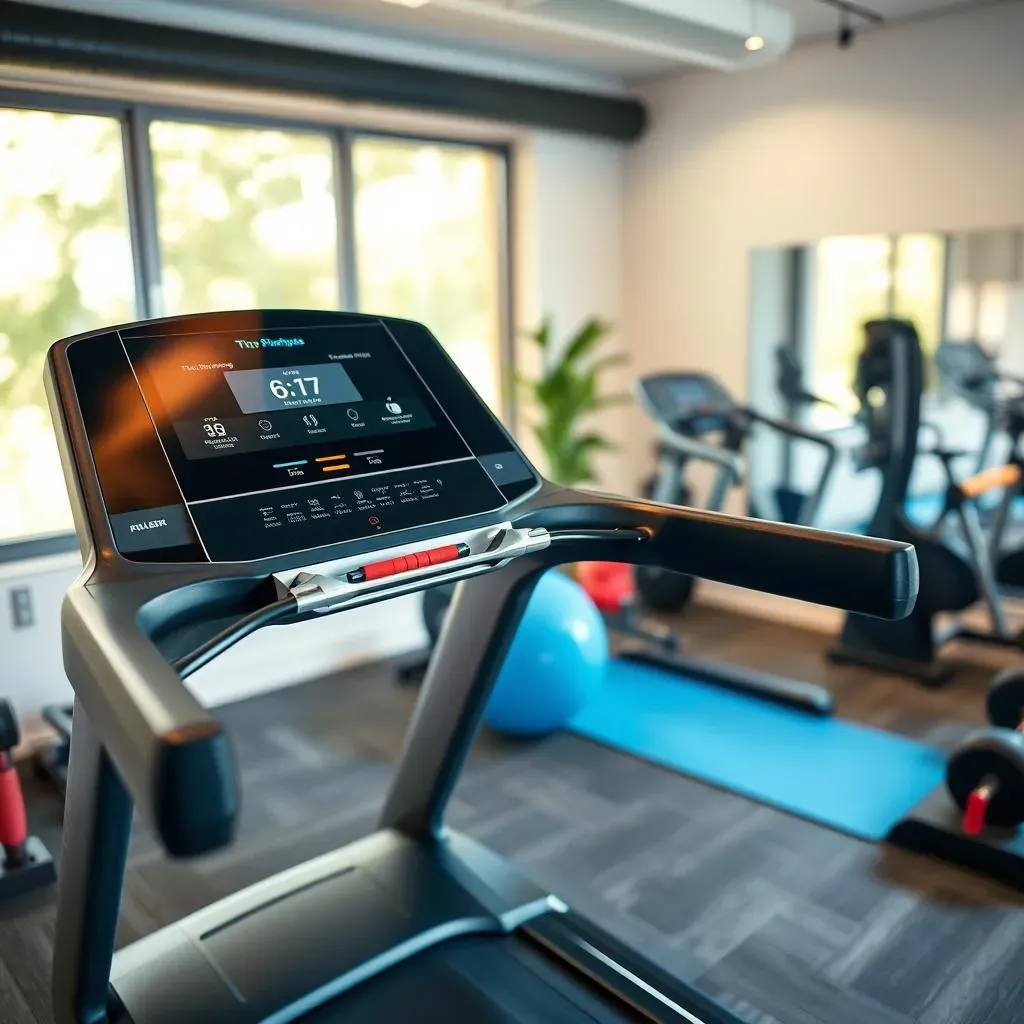
Assess Your Fitness Goals and Needs
Before you even start browsing, take a moment to really think about what you want to achieve with your treadmill. Are you training for a marathon? Do you just need a way to get some light cardio in while watching your favorite shows? Are you primarily a walker, or do you plan to run regularly? Understanding your fitness goals is the first step in choosing the right home gym equipment treadmill. Consider your current fitness level, any physical limitations you might have, and how frequently you plan to use the machine. A serious runner will need a treadmill with a more powerful motor and a longer deck than someone who primarily walks.
Think about the features that are important to you. Do you need a wide range of incline and decline options? Are you interested in interactive training programs? Do you want a treadmill that can track your heart rate and other metrics? Make a list of your must-have features and your nice-to-have features. This will help you narrow down your options and avoid getting overwhelmed by the sheer number of treadmills on the market. Also, think about who else in your household might use the treadmill. Their needs and goals should also be considered.
Consider Space, Budget, and Features
Now that you have a good understanding of your fitness goals, it's time to consider the practical aspects of buying a treadmill. Space is a major factor for many people. Measure the area where you plan to put the treadmill and make sure you have enough room for both the machine and comfortable movement around it. Folding treadmills are a great option for those with limited space, but keep in mind that they may not be as sturdy as non-folding models. Budget is another important consideration. Treadmills can range in price from a few hundred dollars to several thousand dollars. Determine how much you're willing to spend and stick to your budget. Remember to factor in the cost of delivery and assembly, if applicable.
Features can significantly impact your workout experience. Look for a treadmill with a comfortable deck size, a powerful motor, and a user-friendly console. Incline and decline options can add variety and challenge to your workouts. Heart rate monitoring can help you stay in your target zone. Interactive training programs can keep you motivated and engaged. Consider the warranty offered by the manufacturer. A good warranty can protect you from unexpected repairs or replacements. Read reviews from other users to get an idea of the treadmill's reliability and performance.
Treadmill Care and Maintenance: Keeping Your Home Gym Equipment Treadmill in Top Shape
Treadmill Care and Maintenance: Keeping Your Home Gym Equipment Treadmill in Top Shape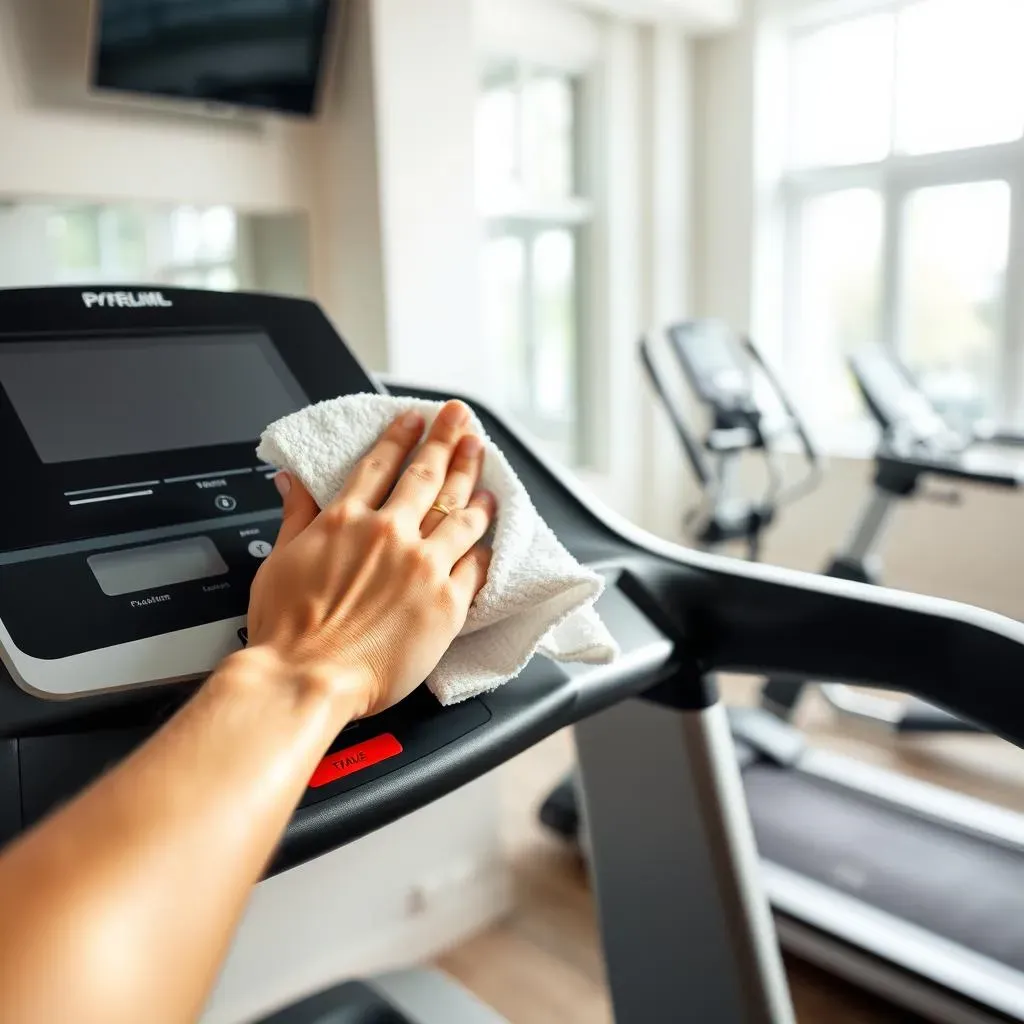
Wipe Down After Each Use
Think of your home gym equipment treadmill like your car – you wouldn't let dirt and grime accumulate without giving it a wash, right? The same principle applies here. After each workout, take a few minutes to wipe down the console, handrails, and running deck with a damp cloth. This simple step removes sweat, dust, and other debris that can damage the machine over time. For a deeper clean, you can use a mild soap solution, but be sure to avoid harsh chemicals or abrasive cleaners that could scratch the surfaces. Always unplug the treadmill before cleaning and allow it to dry completely before using it again.
Pay special attention to the console, as sweat can seep into the buttons and damage the electronics. A quick wipe-down can prevent costly repairs down the road. Don't forget to clean the area around the treadmill as well. Dust and dirt can accumulate under the machine and affect its performance. Vacuuming or sweeping the floor regularly can help keep your treadmill running smoothly.
Regularly Inspect and Lubricate the Belt
The running belt is the heart of your home gym equipment treadmill, and keeping it in good condition is crucial for a smooth and safe workout experience. Over time, the belt can become loose, worn, or misaligned, which can lead to jerky movements, increased friction, and even motor damage. To prevent these issues, inspect the belt regularly for signs of wear and tear, such as cracks, fraying, or slippage. If you notice any of these problems, consult your owner's manual for instructions on how to tighten or replace the belt.
Lubricating the belt is another essential maintenance task. Most treadmills require lubrication every few months, depending on usage. Check your owner's manual for the recommended lubrication schedule and the type of lubricant to use. Typically, a silicone-based lubricant is recommended. To lubricate the belt, simply lift the edges of the belt and spray the lubricant evenly between the belt and the deck. Then, walk on the treadmill at a slow speed for a few minutes to distribute the lubricant. Proper lubrication reduces friction, extends the life of the belt, and improves the overall performance of your treadmill.
Maintenance Task | Frequency | Benefits |
|---|---|---|
Wipe Down | After each use | Removes sweat and debris, prevents damage |
Inspect Belt | Monthly | Identifies wear and tear, prevents accidents |
Lubricate Belt | Every few months | Reduces friction, extends belt life |
Check and Tighten Bolts and Components
Over time, the vibrations from running can loosen bolts and other components on your home gym equipment treadmill. This can lead to instability, noise, and even safety hazards. To prevent these problems, periodically check all the bolts, screws, and connections on your treadmill and tighten them as needed. Pay special attention to the bolts that hold the console, handrails, and motor cover in place. Use the appropriate tools and avoid over-tightening, which can strip the threads.
Also, check the power cord for any signs of damage, such as fraying or cracking. A damaged power cord can be a fire hazard. If you notice any damage, replace the cord immediately. By taking a few minutes to inspect and tighten the components of your treadmill, you can ensure its stability, safety, and longevity.
Types of Treadmills for Your Home Gym Equipment
Types of Treadmills for Your Home Gym Equipment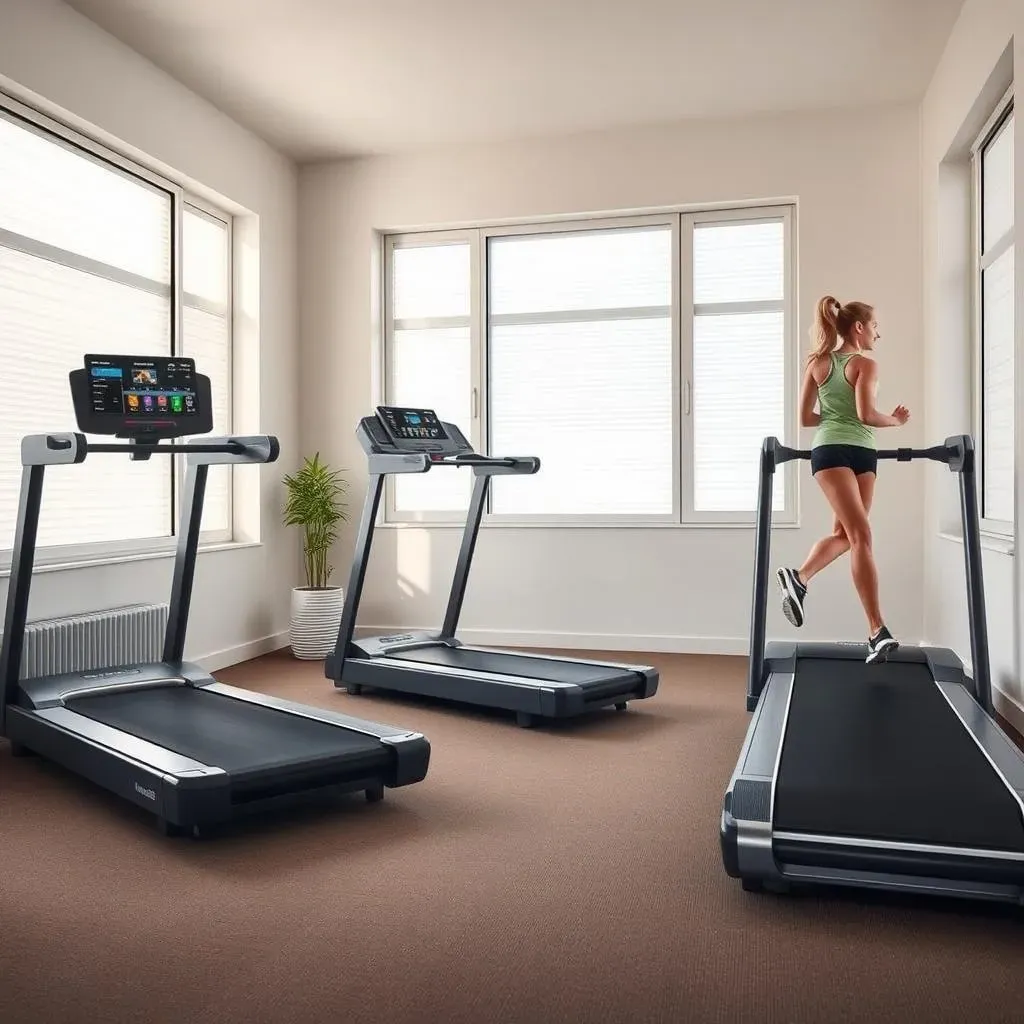
Motorized Treadmills: The Powerhouse
Motorized treadmills are the most common type you'll find, and for good reason. They offer a consistent and adjustable speed, making them ideal for a wide range of workouts, from leisurely walks to intense sprints. The motor drives the belt, allowing you to focus solely on your stride and effort level. These treadmills typically come with a variety of features, such as incline and decline settings, pre-programmed workouts, and heart rate monitoring, providing a comprehensive and customizable workout experience. They're a solid choice for anyone serious about their fitness, providing reliability and versatility for years to come.
Motorized treadmills generally have higher weight limits and can withstand more frequent use than manual treadmills. They're a worthwhile investment if you plan to use your treadmill regularly and want a machine that can keep up with your fitness goals. The cost can vary significantly depending on the motor's power, the features included, and the brand's reputation. However, the benefits of a motorized treadmill, such as consistent speed and customizable workouts, often outweigh the initial investment.
Manual Treadmills: The Self-Powered Option
If you're looking for a more budget-friendly and eco-conscious option, manual treadmills are worth considering. Unlike motorized treadmills, manual treadmills are powered by your own movement. You walk or run, and your feet propel the belt. This provides a more natural and engaging workout experience, as you're directly controlling the speed and intensity. Manual treadmills are also typically lighter and more compact than motorized treadmills, making them a good choice for smaller spaces.
However, manual treadmills do require more effort to use, as you're responsible for both moving the belt and maintaining your speed. They also tend to have fewer features than motorized treadmills, such as limited incline options and no pre-programmed workouts. They might not be suitable for high-intensity training or for those with joint problems, as the lack of cushioning can put more stress on the body. But if you're looking for a simple, affordable, and space-saving way to get a workout, a manual treadmill can be a great option.
Curved Treadmills: The Natural Runner
Curved treadmills are a unique and increasingly popular type of treadmill that mimics the feel of running outdoors. These treadmills have a curved running surface and are powered entirely by your own movement, similar to manual treadmills. The curved design encourages a more natural running form, engaging more muscles and burning more calories. They're also known for being low-impact, as the curve helps to absorb shock and reduce stress on your joints.
Curved treadmills are often used in high-intensity interval training (HIIT) workouts and are a favorite among athletes and fitness enthusiasts. They require more effort to use than motorized treadmills, but they provide a more challenging and rewarding workout experience. Due to their specialized design and features, curved treadmills tend to be more expensive than traditional treadmills. They also require a bit of a learning curve to get used to, as the running motion is slightly different. However, if you're looking for a treadmill that can push you to your limits and provide a more natural running experience, a curved treadmill is worth considering.
Treadmill Type | Power Source | Best For | Pros | Cons |
|---|---|---|---|---|
Motorized | Electric Motor | Varied Workouts | Consistent speed, many features | Can be expensive, requires power |
Manual | User's Movement | Budget-Friendly, Small Spaces | Affordable, space-saving | Requires more effort, fewer features |
Curved | User's Movement | HIIT, Natural Running | Engaging, low-impact | Expensive, requires learning curve |
Home Gym Equipment Treadmill FAQs
Home Gym Equipment Treadmill FAQs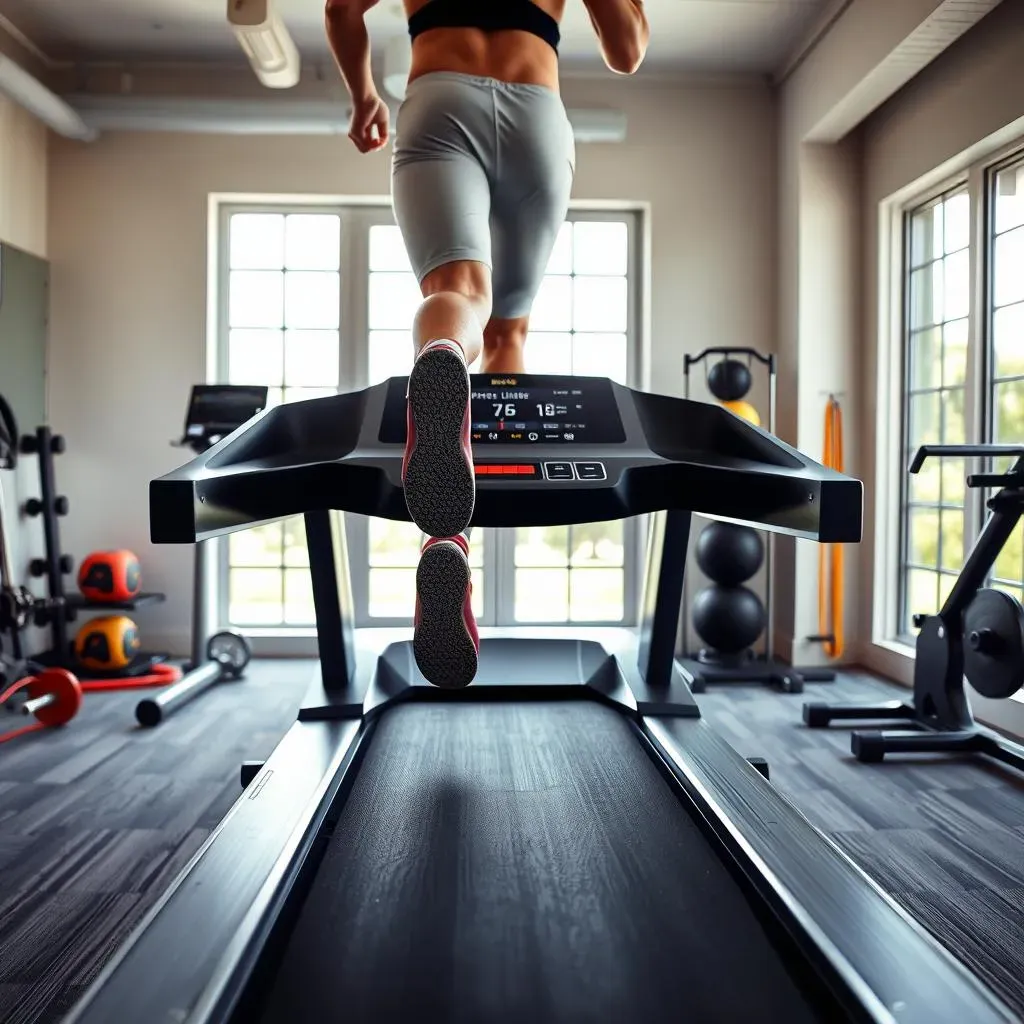
What is the ideal treadmill motor power (CHP) for running vs. walking?
Choosing the right motor power, measured in Continuous Horsepower (CHP), is crucial for a satisfying treadmill experience. For walkers, a motor with 2.0 CHP or higher should suffice, providing enough power for consistent speeds and inclines. However, if you're a runner, especially one who enjoys interval training or longer distances, you'll want to aim for at least 3.0 CHP. This ensures the motor can handle the impact and demands of running without overheating or struggling. For heavier users, consider a motor with even higher CHP to ensure longevity and optimal performance of your home gym equipment treadmill.
Also, keep in mind that the stated CHP is a continuous rating, meaning the motor can sustain that level of power consistently. Peak horsepower, often advertised, is a less reliable indicator of performance. It's also worth noting that a higher CHP motor typically translates to a more durable and longer-lasting treadmill. So, while it might be a bigger investment upfront, it can save you money in the long run by reducing the risk of repairs or replacements. And be sure to read reviews and compare models to find the best balance of power, features, and price for your needs.
How important is the treadmill deck size, and what size is recommended?
The treadmill deck size is a critical factor for comfort and safety, especially for runners. A longer deck is essential for those with a longer stride, preventing you from feeling cramped or like you might run out of space. A width of at least 20 inches is generally recommended to allow for natural side-to-side movement. For walkers, a shorter deck might be sufficient, but runners should aim for a deck length of at least 55 inches, and ideally 60 inches or more, especially if you're taller than average.
Also, keep in mind that the deck size affects the overall footprint of the home gym equipment treadmill. So, you'll need to consider your available space when making your decision. Folding treadmills can be a good option for those with limited space, but be sure to check the dimensions when folded and unfolded. Ultimately, the best deck size is the one that allows you to run or walk comfortably and safely without feeling restricted. And don't hesitate to try out different models in person to get a feel for what size works best for you.
User Type | Recommended Deck Length | Recommended Deck Width |
|---|---|---|
Walkers | 48 inches or more | 20 inches or more |
Runners | 55 inches or more (60+ for taller users) | 20 inches or more |
Conclusion: Step Up Your Fitness Game with the Right Treadmill
Investing in a home gym equipment treadmill is a significant step towards achieving your fitness goals, offering unparalleled convenience and versatility. By carefully considering your individual needs, space constraints, and budget, you can select the perfect treadmill to transform your home into a personalized fitness hub. Remember to prioritize maintenance and care to ensure your treadmill remains a reliable workout companion for years to come. So, what are you waiting for? It's time to take control of your fitness journey and experience the transformative power of a home gym equipment treadmill!